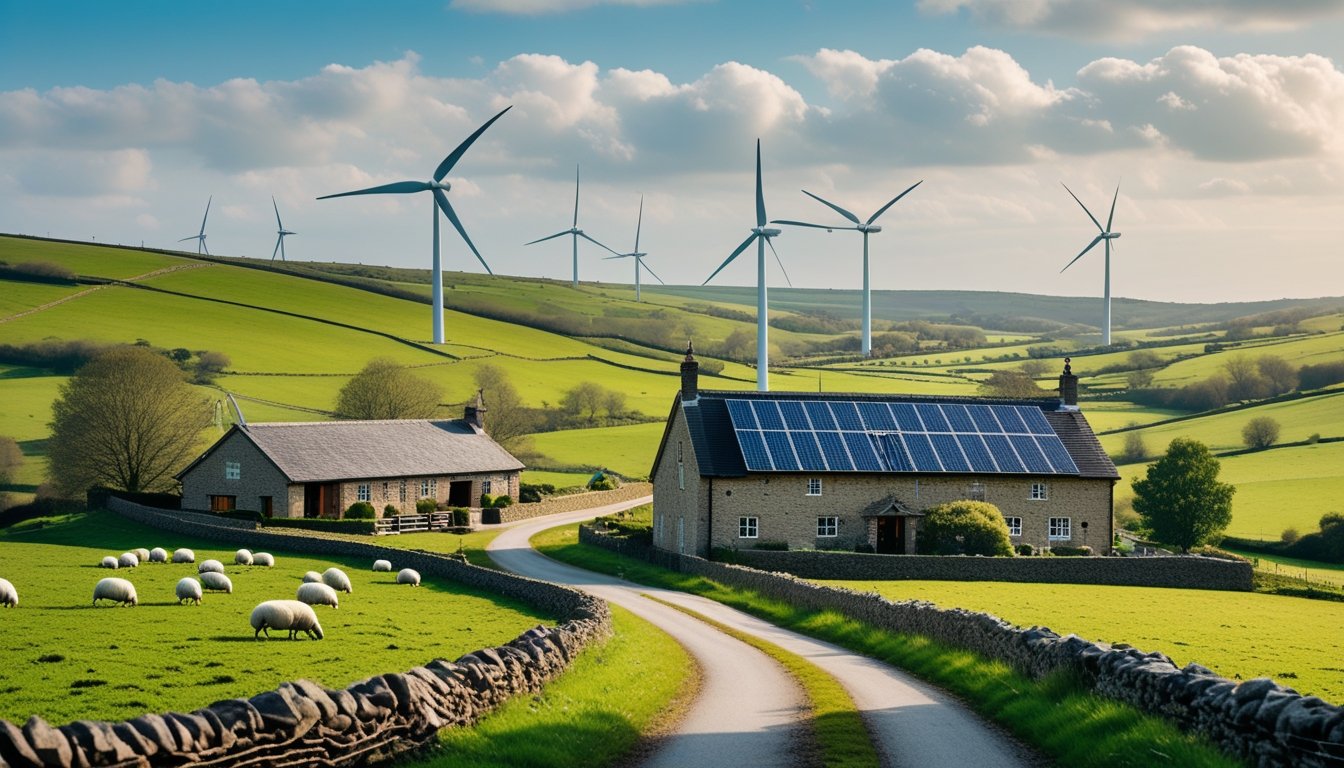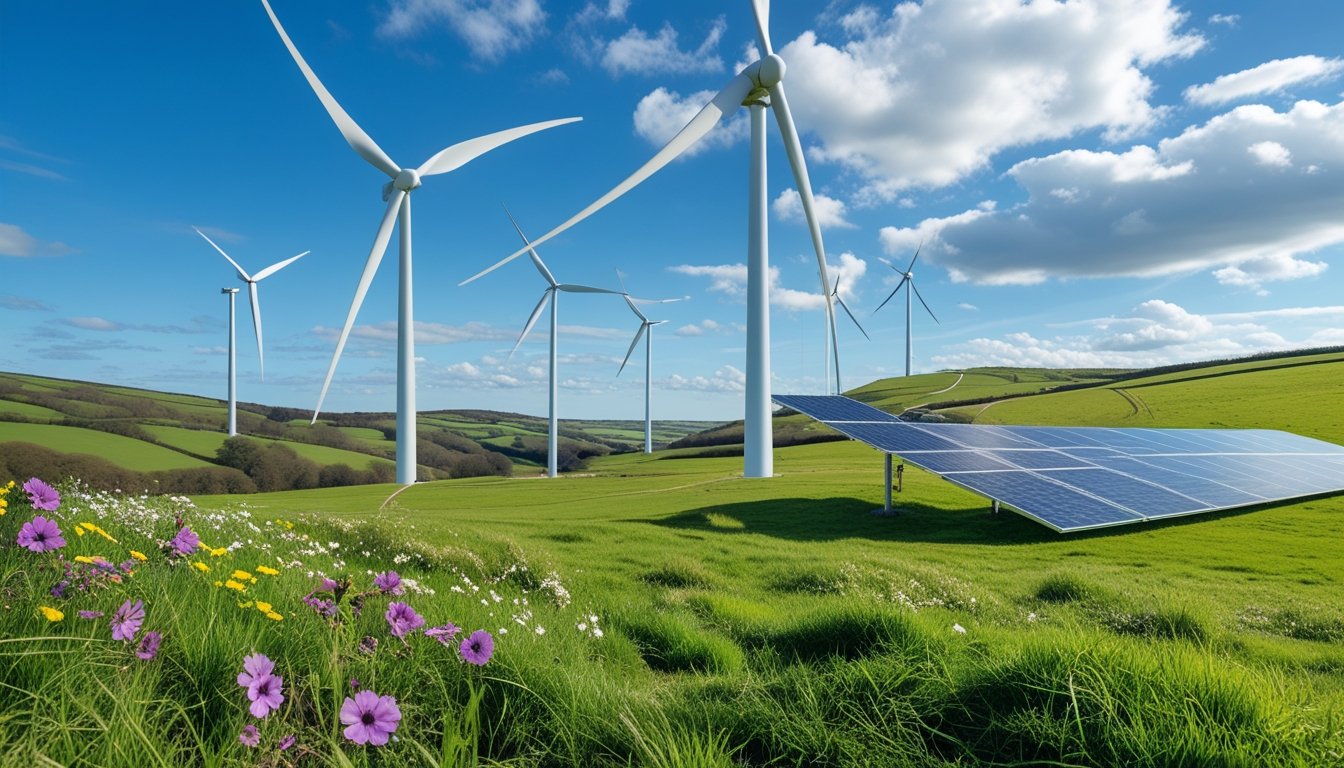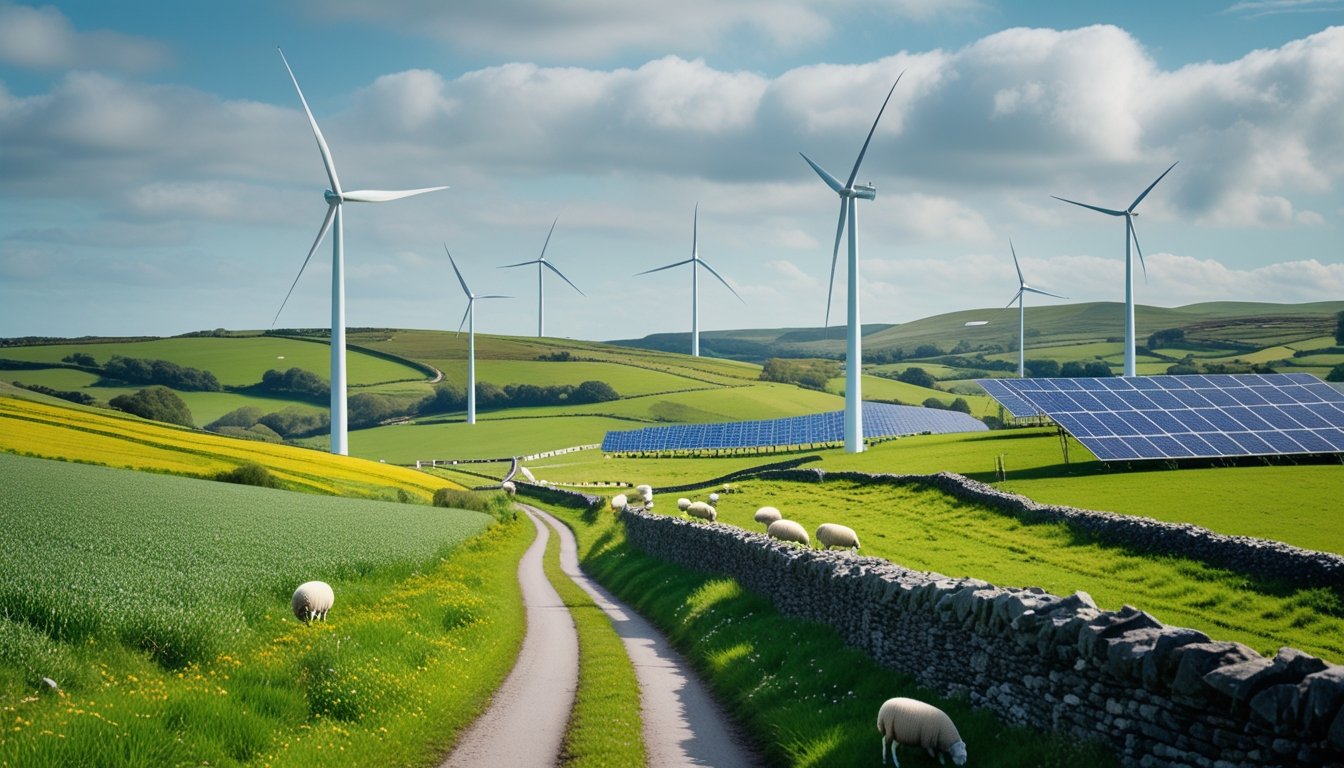Late updated: 13 Jun 2025 11:06
Written by: Oliver Bennett
UK Countryside's Role In Renewable Energy Transition: A Sustainable Future
The UK countryside is at the heart of our nation’s renewable energy transition. With vast landscapes and natural resources, rural areas are ideal for deploying renewable technologies such as wind, solar, and biomass. The countryside’s unique characteristics not only facilitate clean energy generation but also provide opportunities for sustainable economic growth and enhanced energy security. As we push towards the 2050 net zero target, the significance of integrating renewable energy into these regions cannot be overstated.

In these rural areas, renewable energy initiatives are crucial for carbon reduction efforts. They serve a pivotal role in transforming how energy is produced and consumed across the UK. Despite challenges faced in implementation—such as infrastructure development and investment needs—the reward lies in the potential to create a sustainable future while preserving the natural beauty and biodiversity of the countryside.
Our journey to a sustainable future in the UK is intricately linked to the countryside’s ability to embrace renewable energy. From increasing renewable capacity to supporting local communities with economic opportunities, the transition represents an opportunity not just for environmental benefits, but for a broader social and economic impact. The potential of our rural regions to lead this change is both promising and essential.
Key Takeaways
- The UK countryside is crucial for renewable energy progress.
- Renewable energy benefits both the environment and local economies.
- Challenges exist, but rural areas have strong potential for growth.
The UK Countryside’s Pivotal Role in Renewable Energy Transition

Our focus is the critical contribution of the UK's rural areas to the renewable energy transition, highlighting efforts in wind and solar energy, low-carbon technology integration, and local community impacts. These developments not only promote clean energy but also enhance energy independence and boost rural economies.
Harnessing Wind and Solar Resources in Rural Areas
Rural areas in the UK offer vast potential for wind and solar energy development due to their expansive landscapes. Onshore wind farms and solar farms capitalize on these open spaces.
Wind turbines are often strategically placed in sparsely populated regions to minimise disruption while maximising wind harnessing capabilities. Rural areas also provide ample space for installing solar panels, allowing large-scale projects that contribute significantly to the country's green energy goals. We see wind and solar energy in these areas as vital components in reducing reliance on fossil fuels and advancing energy independence.
Integration of Low-Carbon Technologies in the Countryside
Utilising low-carbon technologies in rural settings is key to the UK's clean energy aims. Advanced technologies are being integrated into the countryside, supporting renewable energy sources.
Examples include the use of bioenergy systems and innovative energy storage solutions. These technologies offer efficient ways to store and distribute energy, crucial for balancing supply and demand. Encouraging local businesses to adopt green practices ensures that rural areas not only produce renewable energy but also implement it in their operations. These initiatives help make the countryside more sustainable and productive.
Impact on Rural Communities and Local Economies
The transformation towards renewable energy significantly impacts rural communities and economies. Wind farms and solar installations provide job opportunities, fostering local employment and economic growth.
The funds generated from these projects are sometimes reinvested into the community, supporting infrastructure and community projects. In some areas, renewable energy initiatives have become a source of pride for residents. The improved accessibility to clean energy also empowers local businesses to become more energy-efficient and competitive. By investing in renewable projects, rural areas can ensure a stable and prosperous future while contributing to national energy targets.
Environmental, Economic and Policy Dimensions of the Countryside’s Energy Transition

In the shift towards renewable energy, the UK countryside offers unique environmental and economic opportunities alongside certain challenges. By integrating government policies and engaging local communities, a sustainable future is achievable.
Climate Change Mitigation and Carbon Reduction in Rural Settings
We recognise that the countryside plays a pivotal role in reducing carbon emissions. Utilising renewable energy sources like wind, solar, and bioenergy helps cut down on fossil fuel consumption, subsequently lowering the carbon footprint.
Incorporating carbon capture techniques further enhances our efforts by removing CO2 from the atmosphere. These strategies contribute not only to local energy security but also align with net-zero goals. However, careful implementation is needed to balance energy needs with preserving rural landscapes.
Balancing Agriculture, Biodiversity and Renewable Projects
Balancing farming with renewable initiatives requires strategic planning. Sustainable farming incentives support practices that both boost food security and reduce environmental impact. It's crucial to ensure that renewable projects do not undermine wildlife habitats, which are vital to biodiversity.
Countryside stewardship can guide project development to respect and maintain biodiversity. By considering visual impacts and integrating with the natural environment, we protect both agricultural productivity and ecological health.
Government Policies and Sustainable Development Initiatives
Government policies play a crucial role in shaping the energy transition. Net zero strategies aim to reduce dependence on fossil fuels while promoting investment in clean technologies like heat pumps and carbon capture and storage systems.
Initiatives such as the Sustainable Farming Incentive (SFI) promote environmental stewardship and economic growth. Proper articulation of these policies ensures that energy developments complement rural community interests and their sustainable futures.
Community Engagement and Public Attitudes
Engaging local communities is vital for the success of renewable energy projects. Communication fosters mutual understanding and helps integrate local knowledge into project planning. By involving communities, we address public concerns regarding potential drawbacks like visual impacts or flooding risks.
Public transport enhancements and educational initiatives can also shift public attitudes towards acceptance and support. Community participation ultimately drives sustainable development and ensures projects reflect the needs and values of rural populations.
Frequently Asked Questions

Our exploration of the UK countryside's role in renewable energy focuses on several key aspects. We consider the factors driving the transition to clean energy, government policies that provide support, and the impact of renewables on the rural economy.
What are the primary drivers for the United Kingdom's transition to renewable energy sources?
The UK is transitioning to renewable energy to reduce greenhouse gas emissions and combat climate change. Increasing energy security and reducing reliance on imported fossil fuels are also critical drivers for this shift. Additionally, economic opportunities in the clean energy sector are significant motivating factors.
How does the United Kingdom's government policy support the renewable energy sector?
Government support is evident through subsidies, tax incentives, and the establishment of binding renewable energy targets. The UK's policies aim to incentivize investment in renewable infrastructure and ensure a transition towards a clean energy future.
Which region within the United Kingdom is the leading producer of renewable energy?
Scotland stands out as a leading producer of renewable energy. It leverages abundant natural resources, such as wind, to produce a significant portion of the UK's renewable electricity. The region's ambitious targets further strengthen its leadership role in this sector.
What proportion of the United Kingdom's renewable energy is derived from wind power?
Wind power contributes significantly to the UK's renewable energy mix, with offshore and onshore wind farms supplying a substantial portion of electricity. Recent data indicate that wind energy accounts for a large share, emphasising its critical role in the overall renewable energy strategy.
How does renewable energy contribute to the rural economy in the United Kingdom?
Renewable energy projects boost rural economies by creating jobs and providing additional income streams. Landowners can benefit from leasing agreements for wind turbines or solar panels. Communities also gain from local development funds derived from renewable energy projects.
What are the major challenges facing the development of renewable energy infrastructure in the UK countryside?
Challenges include high initial investment costs and regulatory hurdles. Ensuring that new developments do not adversely impact local environments and communities is also crucial. Addressing grid integration and storage solutions remains a significant hurdle for effective renewable energy implementation in rural areas.
